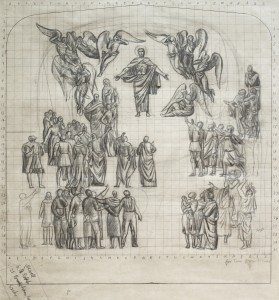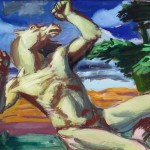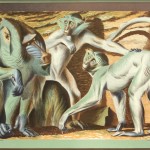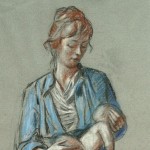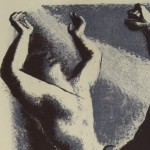
Chelsea is unique amongst English porcelain manufacturers of the 18th century in that its entire production was devoted to the luxury market and intended to delight the ‘Gentry’ and ‘Nobility’ of these Isles. Porcelain made at Chelsea, especially during the Red Anchor Period (1753-1757), is regarded by many as the finest porcelain made in England in the 18th century. Today Chelsea porcelain is still revered by connoisseurs, just as it was when it was first made.
18th century Continental porcelain manufacturers like Meissen and Sévres often benefited from the financial security afforded by royal and aristocratic patronage. In contrast the English factories were private enterprises predominately manufacturing soft-paste porcelains rather than the hard-paste porcelains from China and the Continent. The survival of these English factories was entirely dependent on their commercial success in what was a highly competitive market. Factories like Bow, Liverpool and Lowestoft produced wares whose decorative styles were influenced by earlier earthenware pieces. The confident, forthright quality of their output broadly reflected the tastes of a wide cross-section of English society. Porcelain from factories like Chelsea, Derby and Worcester were finely made, their tastes influenced by Meissen and Sévres.
Nicholas Sprimont was not only a proprietor of the factory but is generally accepted as being the guiding artistic force at Chelsea. He was born in Liege in 1716. I have always felt that the fashionable styles employed at Chelsea, its concentration on the luxury market, and the quality of modelling, all owe something to Sprimont’s background as a Huguenot silversmith.
By opening the porcelain works in Chelsea close to the fashionable Ranelagh pleasure gardens Sprimont made the company accessible to the ‘Nobility’ and ‘Gentry’ for whom his porcelain output was expressly created. Although Nicholas Sprimont did not benefit from a patron to subsidize his commercial activities he did have influential contacts and amongst these was Sir Everard Fawkener. Fawkener provided financial backing to the Chelsea porcelain factory and was secretary to George II’s second son, Prince William Augustus, the Duke of Cumberland (1721-1765). The Duke was a celebrated figure in 18th century England for his victory at the Battle of Culloden in 1746 which crushed the Jacobite rebellion. There is a popular, but inconclusive, theory amongst art historians that it was actually the Duke who invested in Chelsea through his secretary Fawkener. Whether this is true or not society letters of the time confirm that Prince William expressed a great interest in the factory and Chelsea made a bust of him around 1746.
Porcelain made during the Red Anchor Period at Chelsea (1753-1757) is regarded by many as the finest porcelain made in England in the 18th century. The Red Anchor Period derives its name from the anchor mark which was painted on the base of objects in underglaze red during this period. During this period the glaze became more translucent, though prone to crazing, and a new formula for the porcelain body allowed for thinner potting making wares lighter in weight. A shift in the emphasis of design reflected the continuing influence of Meissen’s output. The celebrated fruit and vegetable forms of this period reflect a move towards the naturalistic.
Illustrated here are several Chelsea Red Anchor naturalistic tureens and a pair of plates which are increasingly rare and sort after in today’s market. These examples came from the estate of a collector who lived to the north of Chichester where I discovered them on a cold winter’s day late last year. They all date from the mid-1750s. Their marks were discretely placed on the bases which is typical of Chelsea at this date. The underglaze red mark has a rounded crown beneath which is the anchor’s shank and arms which terminate in sharp, barbed flukes. The cauliflower and pair of lettuce tureens are so beautifully modelled and enamelled that they seem almost edible; the curled lettuce leaf handles on the latter are a particularly charming detail. Despite damage and repairs these two lots, just 11cm and 13cm high, realised £2600 and £2700 respectively in a specialist auction.
The pair of Chelsea porcelain circular dishes with stalk handles followed the mid-18th century naturalistic taste; white glazed and relief moulded with scolopendrium leaves picked out in green and puce, they were in exceptional condition which was reflected in the £5300 paid for them.
My favourite piece from this collection was the asparagus tureen and cover naturalistically modelled as a bundle of tied asparagus spears. It reminded me of happy days in Jersey where my wife’s Grandpop had a large asparagus bed in his beautifully kept walled vegetable garden. His house and garden nestled in a former quarry and from the wooded bank you could see Gorey Castle and the ocean beyond. The tureen deservedly made £2700.
This fine, horticultural inspired, collection delighted connoisseurs of English porcelain and provided quite a crop of fine prices! But the true value of even the most exceptional objects is often that they provide prompts to fond memories in our busy lives.
By Revd. Rupert Toovey. Originally published on 29th May 2013 in the West Sussex Gazette.
